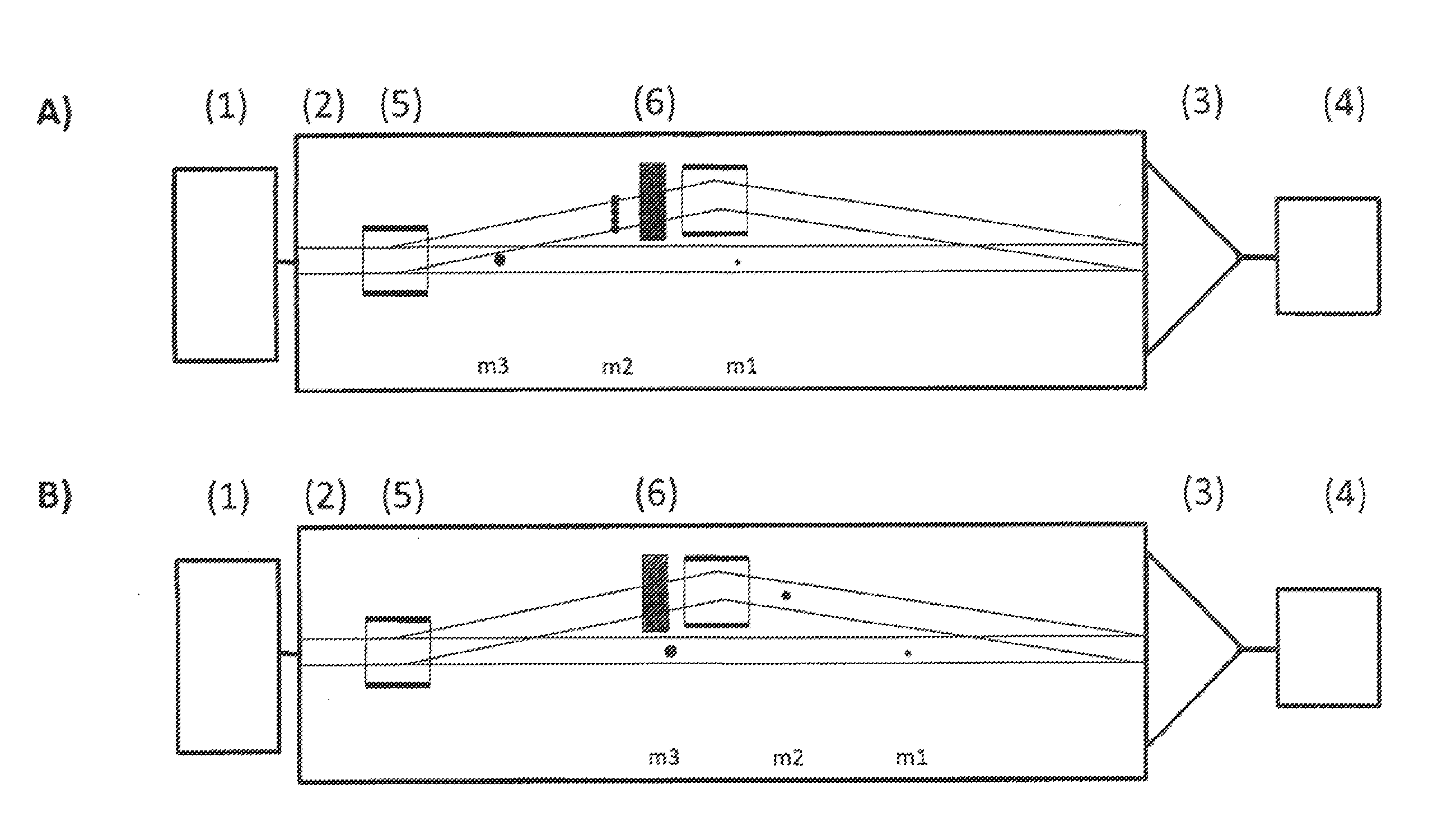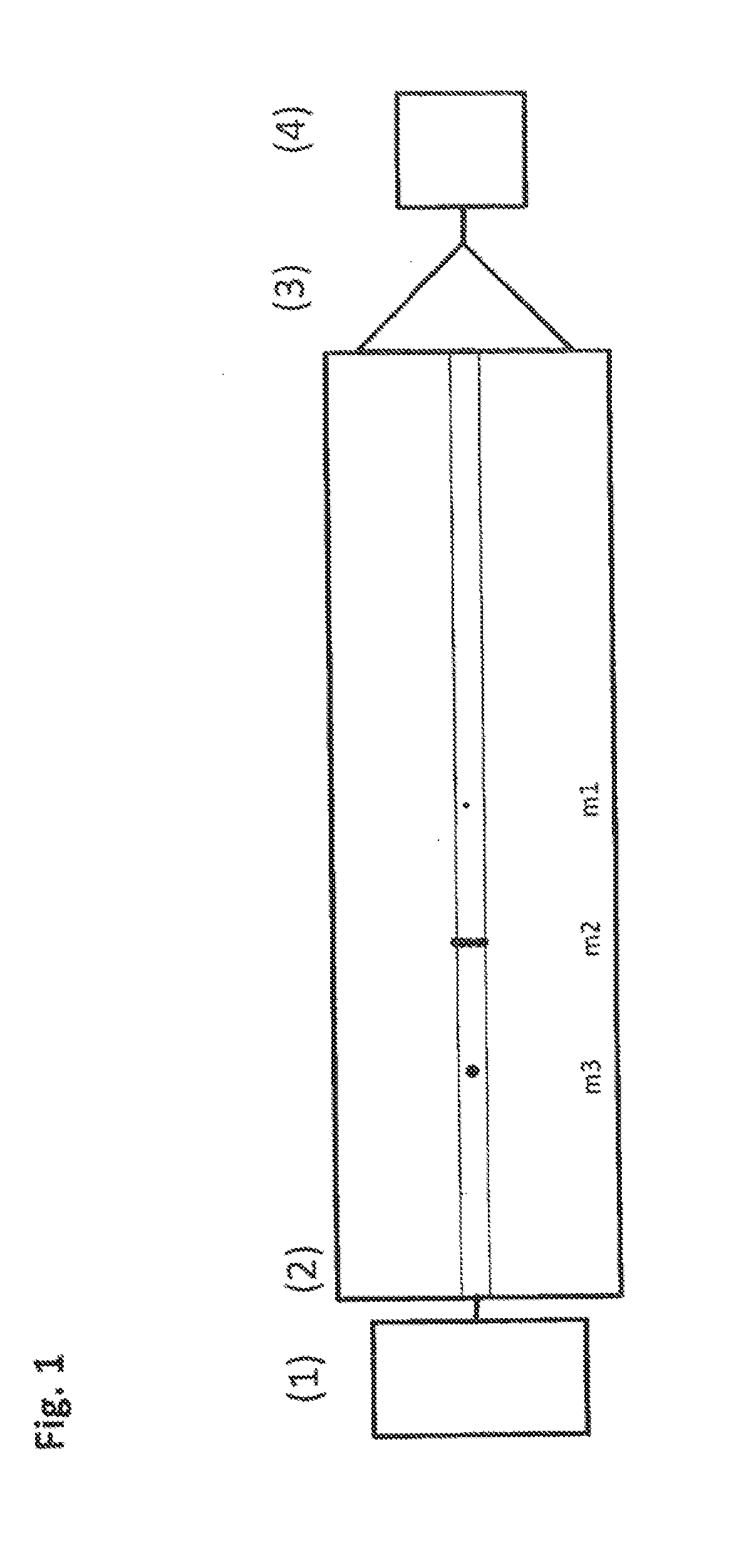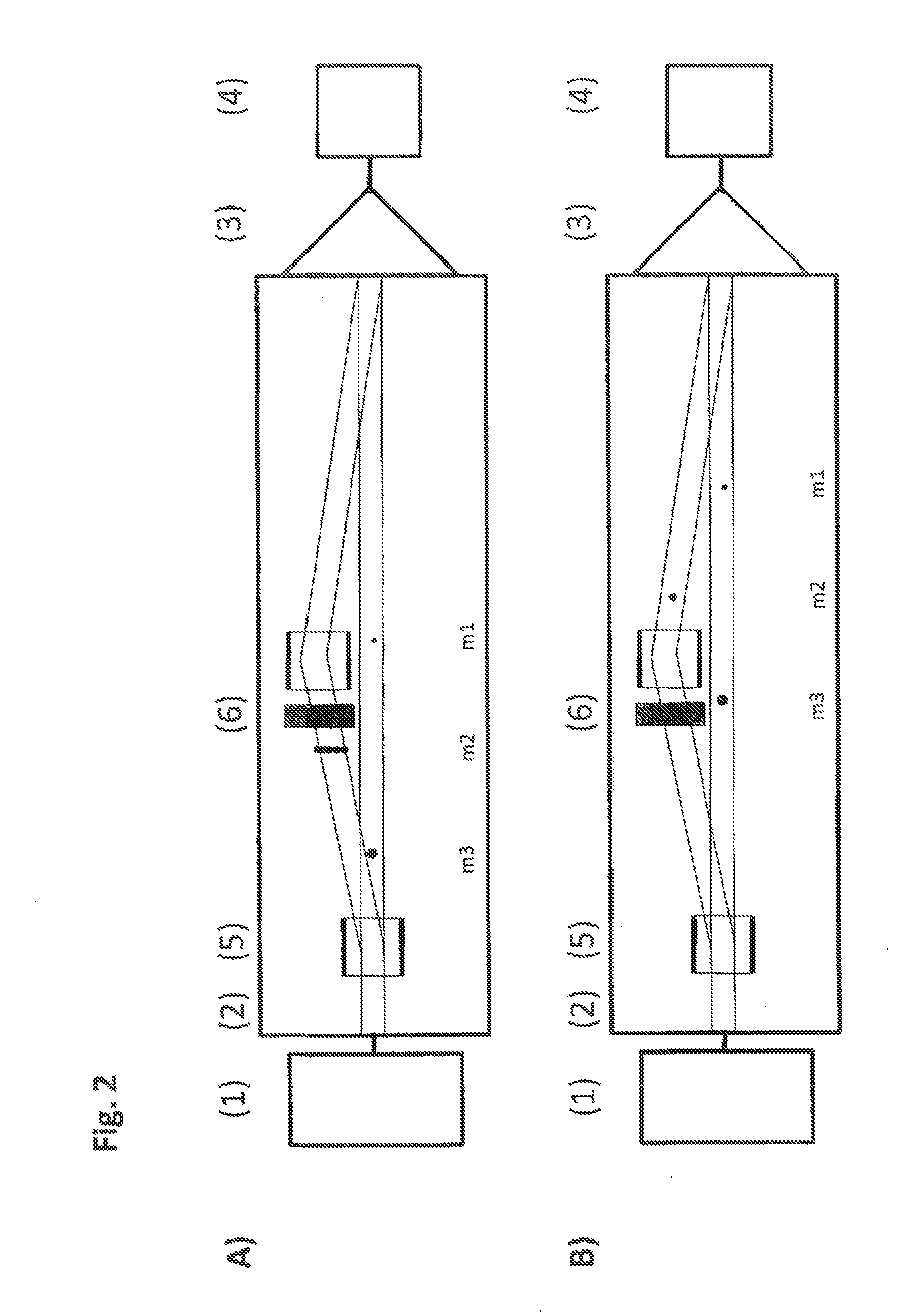Method and a mass spectrometer and uses thereof for detecting ions or subsequently-ionised neutral particles from samples
a mass spectrometer and neutral particle technology, applied in mass spectrometers, isotope separation, particle separator tubes, etc., can solve the problem of insufficient accuracy, high counting rate, and inability to accurately measure intensity, etc. problems, to achieve the effect of reducing the life span of the ion detector which is used, improving the life span of the ion detector, and reducing the loading of high intensities
- Summary
- Abstract
- Description
- Claims
- Application Information
AI Technical Summary
Benefits of technology
Problems solved by technology
Method used
Image
Examples
Embodiment Construction
[0057]The reference numbers used in the individual Figures are used in the same or corresponding manner for the same or corresponding elements in all the Figures. Their description is therefore extensively omitted after the first description.
[0058]The examples subsequently described of the present invention describe respectively individual aspects of the invention or several such aspects which can however be used not only in the combination represented in the respective example but also in another combination or separately from each other. The following examples therefore describe merely a few embodiments of the present invention.
[0059]FIG. 2 now shows, in the partial Figures A and B, a mass spectrometer according to the present invention at various times t1 and t2.
[0060]In FIG. 2A, the spectrometer, just as the spectrometer of FIG. 1 from the state of the art, has an ion source 1, a time-of-flight analyzer 2, a detector and a signal amplifier 3 and an electronic recording unit 4. C...
PUM
 Login to View More
Login to View More Abstract
Description
Claims
Application Information
 Login to View More
Login to View More - R&D
- Intellectual Property
- Life Sciences
- Materials
- Tech Scout
- Unparalleled Data Quality
- Higher Quality Content
- 60% Fewer Hallucinations
Browse by: Latest US Patents, China's latest patents, Technical Efficacy Thesaurus, Application Domain, Technology Topic, Popular Technical Reports.
© 2025 PatSnap. All rights reserved.Legal|Privacy policy|Modern Slavery Act Transparency Statement|Sitemap|About US| Contact US: help@patsnap.com



